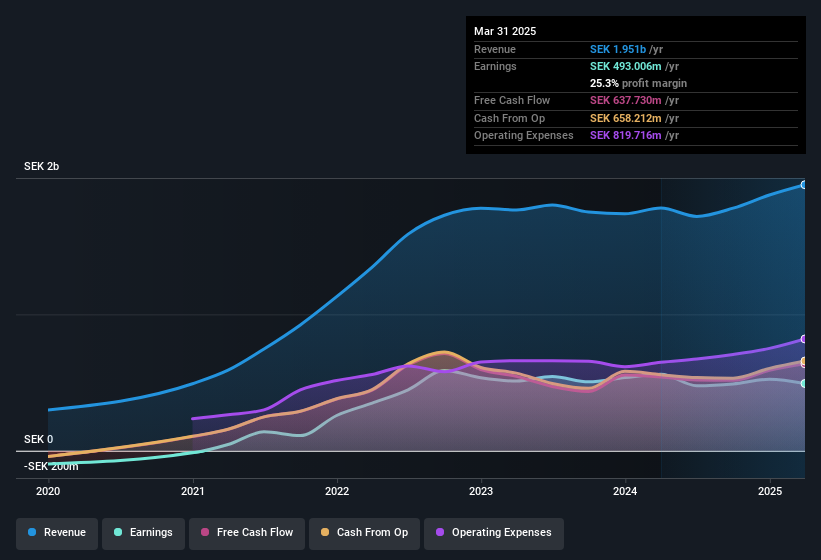Truecaller's (STO:TRUE B) Conservative Accounting Might Explain Soft Earnings
Investors were disappointed with the weak earnings posted by Truecaller AB (publ) (STO:TRUE B ). While the headline numbers were soft, we believe that investors might be missing some encouraging factors.

A Closer Look At Truecaller's Earnings
As finance nerds would already know, the accrual ratio from cashflow is a key measure for assessing how well a company's free cash flow (FCF) matches its profit. To get the accrual ratio we first subtract FCF from profit for a period, and then divide that number by the average operating assets for the period. The ratio shows us how much a company's profit exceeds its FCF.
Therefore, it's actually considered a good thing when a company has a negative accrual ratio, but a bad thing if its accrual ratio is positive. While having an accrual ratio above zero is of little concern, we do think it's worth noting when a company has a relatively high accrual ratio. That's because some academic studies have suggested that high accruals ratios tend to lead to lower profit or less profit growth.
Truecaller has an accrual ratio of -0.59 for the year to March 2025. Therefore, its statutory earnings were very significantly less than its free cashflow. To wit, it produced free cash flow of kr638m during the period, dwarfing its reported profit of kr493.0m. Truecaller's free cash flow improved over the last year, which is generally good to see.
That might leave you wondering what analysts are forecasting in terms of future profitability. Luckily, you can click here to see an interactive graph depicting future profitability, based on their estimates.
Our Take On Truecaller's Profit Performance
Happily for shareholders, Truecaller produced plenty of free cash flow to back up its statutory profit numbers. Because of this, we think Truecaller's underlying earnings potential is as good as, or possibly even better, than the statutory profit makes it seem! And on top of that, its earnings per share have grown at 20% per year over the last three years. Of course, we've only just scratched the surface when it comes to analysing its earnings; one could also consider margins, forecast growth, and return on investment, among other factors. If you'd like to know more about Truecaller as a business, it's important to be aware of any risks it's facing. For example - Truecaller has 1 warning sign we think you should be aware of.
This note has only looked at a single factor that sheds light on the nature of Truecaller's profit. But there is always more to discover if you are capable of focussing your mind on minutiae. Some people consider a high return on equity to be a good sign of a quality business. So you may wish to see this free collection of companies boasting high return on equity, or this list of stocks with high insider ownership.
Valuation is complex, but we're here to simplify it.
Discover if Truecaller might be undervalued or overvalued with our detailed analysis, featuring fair value estimates, potential risks, dividends, insider trades, and its financial condition.
Access Free AnalysisHave feedback on this article? Concerned about the content? Get in touch with us directly. Alternatively, email editorial-team (at) simplywallst.com.
This article by Simply Wall St is general in nature. We provide commentary based on historical data and analyst forecasts only using an unbiased methodology and our articles are not intended to be financial advice. It does not constitute a recommendation to buy or sell any stock, and does not take account of your objectives, or your financial situation. We aim to bring you long-term focused analysis driven by fundamental data. Note that our analysis may not factor in the latest price-sensitive company announcements or qualitative material. Simply Wall St has no position in any stocks mentioned.
About OM:TRUE B
Truecaller
Develops and publishes mobile caller ID applications for individuals and business in India, the Middle East, Africa, and internationally.
Flawless balance sheet and undervalued.
Similar Companies
Market Insights
Community Narratives



